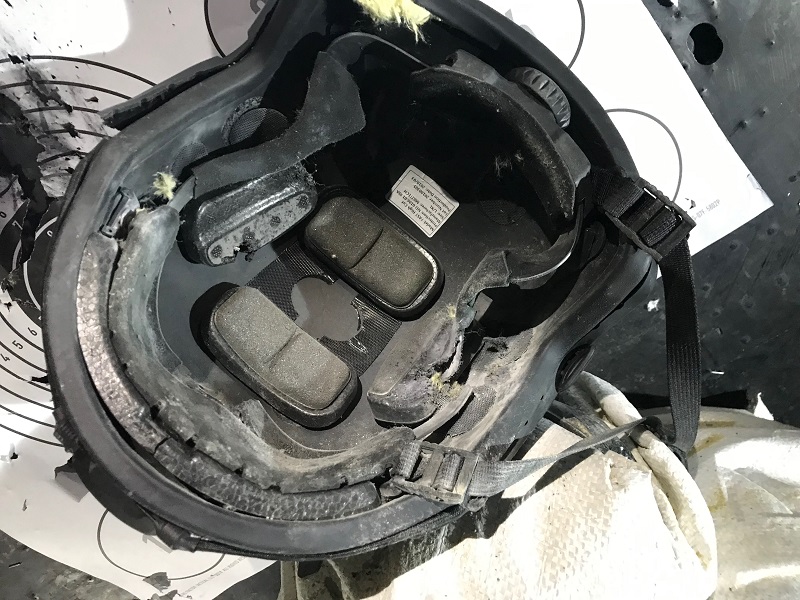Get the weekly SPARTANAT newsletter.
Your bonus: the free E-Book from SPARTANAT.
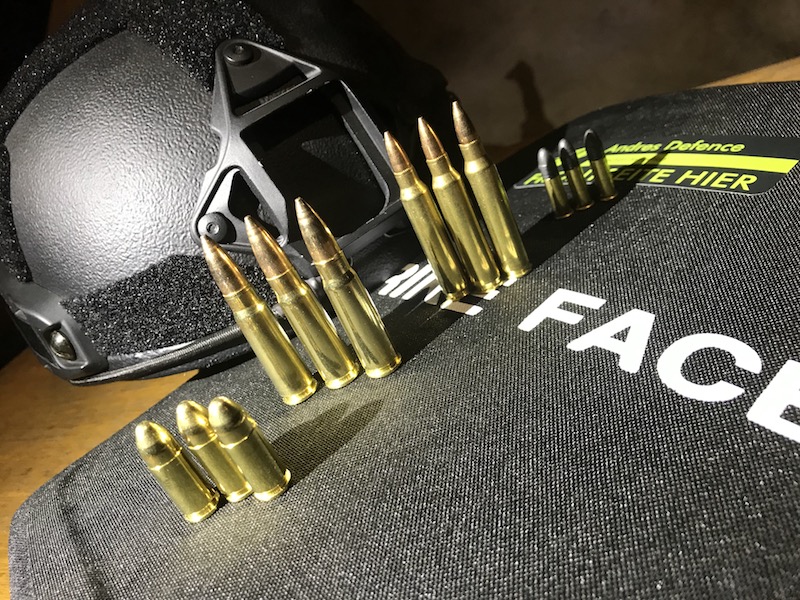
REVIEW: Ballistic Aramid MILITECH FAST High Cut Impact Test
The text discusses a review of the FAST High Cut Helmet by Militech, testing its ballistic protection against various calibers. The helmet withstands hits from handguns but fails against long guns and high-caliber ammunition. The analysis reveals potential head injuries despite the projectiles not penetrating the helmet.
We already introduced you to the FAST High Cut Helmet from Militech HERE on SPARTANAT. Now we wanted to see and personally try what the ballistic protection has to offer. Once again, keep in mind: this is not a scientific test, but one that goes far beyond the limits. But see for yourself.
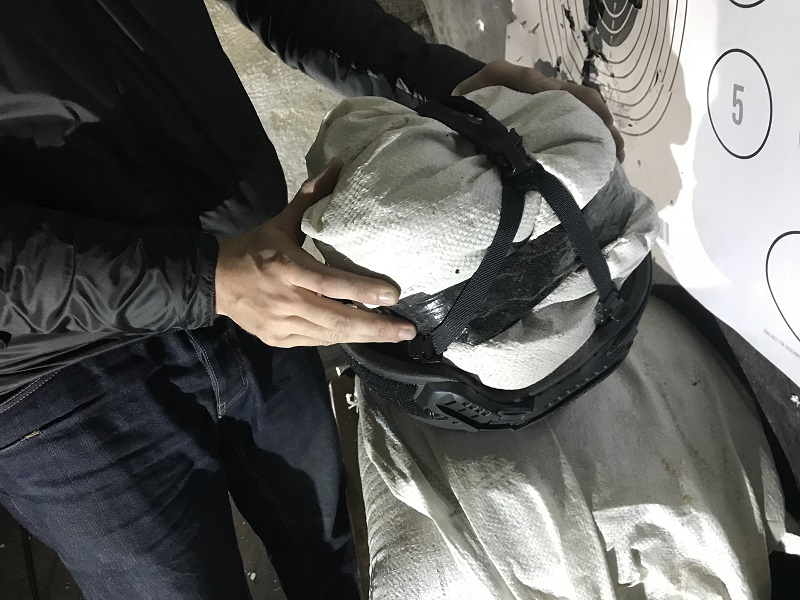 To keep the helmet from bouncing around, we professionally attached it to a sandbag as a head simulation. It may happen more than once that there's nothing inside but sand.
To keep the helmet from bouncing around, we professionally attached it to a sandbag as a head simulation. It may happen more than once that there's nothing inside but sand.
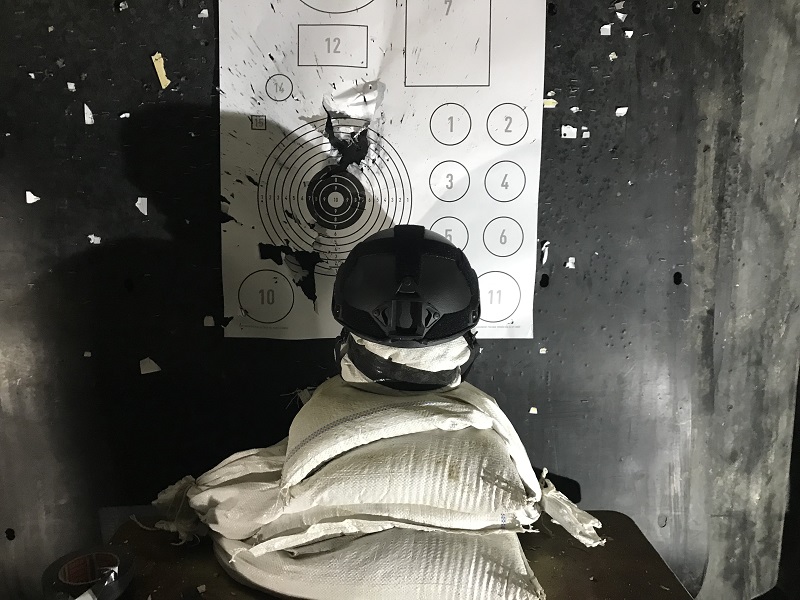 This is what it looks like from the front. To increase the potential area of impact, we leaned the Militech helmet slightly forward.
This is what it looks like from the front. To increase the potential area of impact, we leaned the Militech helmet slightly forward.
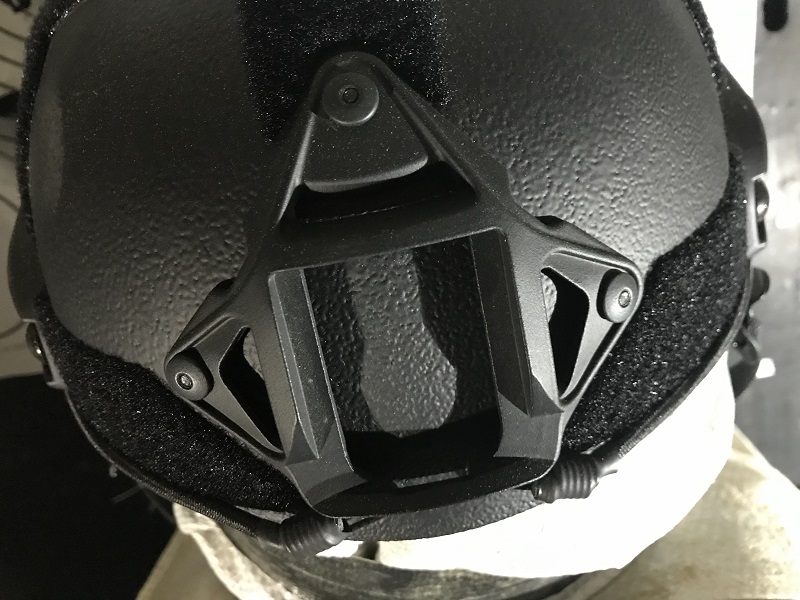 Since we will need the image for comparison later, here is a detailed shot of the Shroud.
Since we will need the image for comparison later, here is a detailed shot of the Shroud.
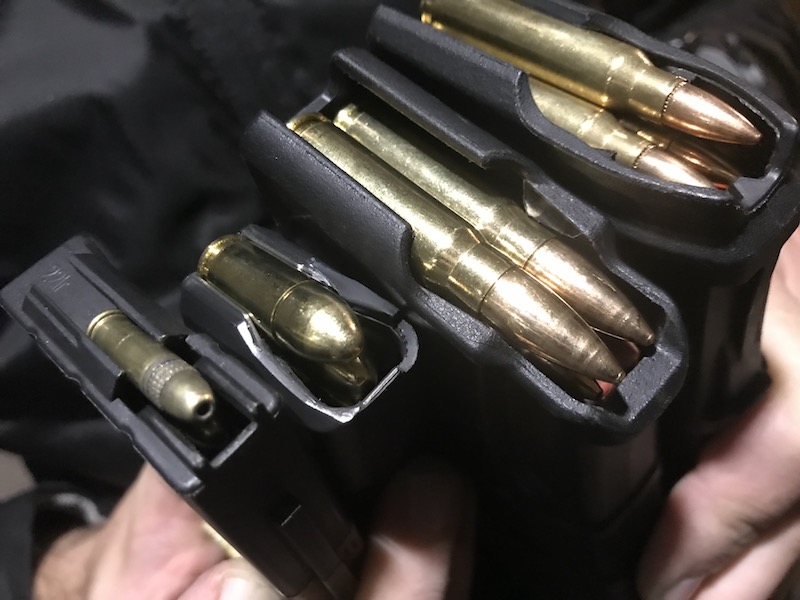 And here comes the treat: .22LR, 9 mm, 7.62 x 39, and .223. We'll do our best …
And here comes the treat: .22LR, 9 mm, 7.62 x 39, and .223. We'll do our best …
 The helmet has a certified protection of NIJ Level IIIa. This means it should withstand shots from handguns. Many claim that small caliber (.22 LR) has no effect on the target and can easily be blocked by any helmet. So let's test that right away, starting with our ISSC SPA rifle.
The helmet has a certified protection of NIJ Level IIIa. This means it should withstand shots from handguns. Many claim that small caliber (.22 LR) has no effect on the target and can easily be blocked by any helmet. So let's test that right away, starting with our ISSC SPA rifle.
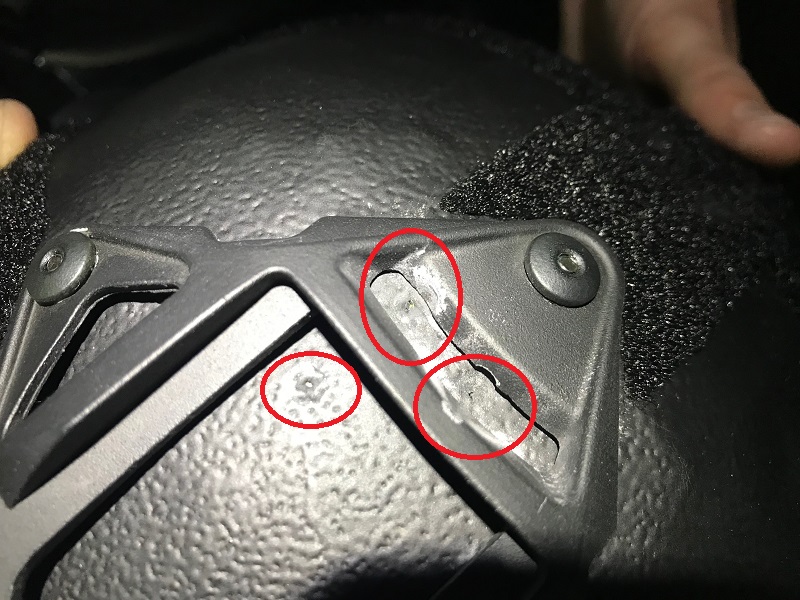 Three nice hits right in the Shroud. A sniper couldn't have done it better. There are no special damages visible on the outside. The two small lead bullets that came into direct contact with the metal of the Shroud did not cause any further damage. But the third one surprised us …
Three nice hits right in the Shroud. A sniper couldn't have done it better. There are no special damages visible on the outside. The two small lead bullets that came into direct contact with the metal of the Shroud did not cause any further damage. But the third one surprised us …
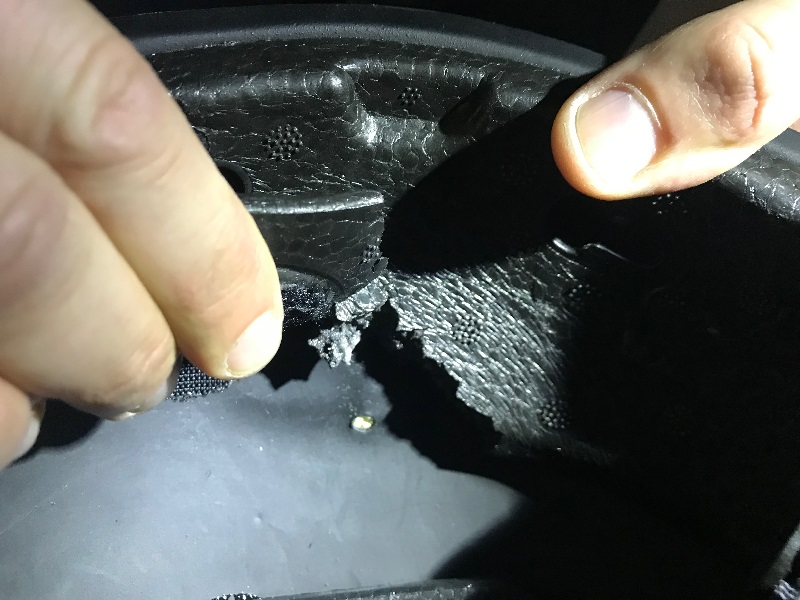 … because it went right through. We didn't expect that, but it was a shot from a long gun and therefore not covered by the helmet's protection class. It must withstand a 9mm pistol. So much for the small caliber having no impact on the target.
… because it went right through. We didn't expect that, but it was a shot from a long gun and therefore not covered by the helmet's protection class. It must withstand a 9mm pistol. So much for the small caliber having no impact on the target.
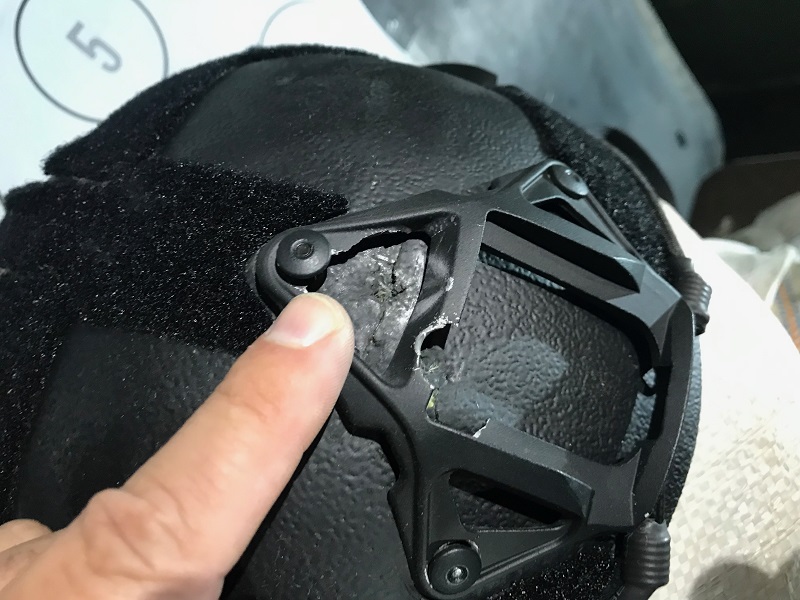 Moving on to three shots of 9mm from ten meters away. Once again, hitting the good old Shroud. You can see significant deformations on the outside of the helmet.
Moving on to three shots of 9mm from ten meters away. Once again, hitting the good old Shroud. You can see significant deformations on the outside of the helmet.
 On the inside, the helmet is bulging out about two centimeters. No projectile has penetrated the shell, but the wearer would definitely suffer noticeable headaches.
On the inside, the helmet is bulging out about two centimeters. No projectile has penetrated the shell, but the wearer would definitely suffer noticeable headaches.
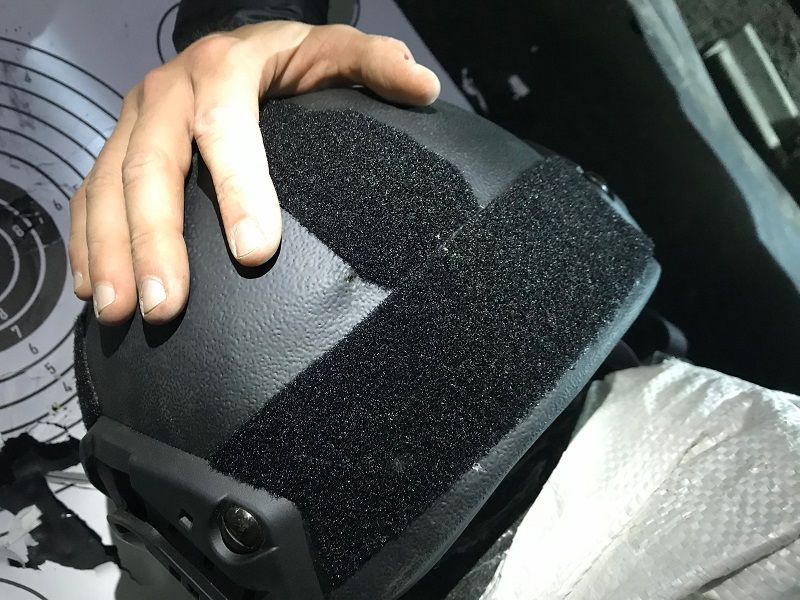 To rule out any weakening due to the small caliber hits on the front side, we fired three shots at the virgin back side. Due to the Velcro, damages are barely visible, but under the top layer, the helmet was hollowed out.
To rule out any weakening due to the small caliber hits on the front side, we fired three shots at the virgin back side. Due to the Velcro, damages are barely visible, but under the top layer, the helmet was hollowed out.
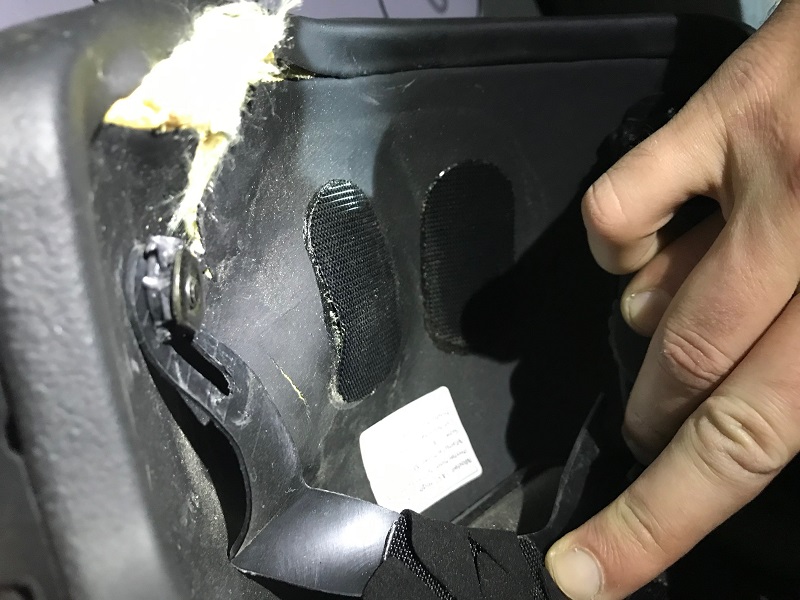 Inside, there is a significant bulge again, this time noticeably more than two centimeters. The rubber band has come off due to the energy released, so the aramid fabric protrudes at the top of the image.
Inside, there is a significant bulge again, this time noticeably more than two centimeters. The rubber band has come off due to the energy released, so the aramid fabric protrudes at the top of the image.
The NIJ Level IIIa protection class only demands that the projectile does not penetrate the shell. But there is no requirement for the maximum bulging. Ergo: the projectile is contained, but you could still suffer severe to fatal head injuries.
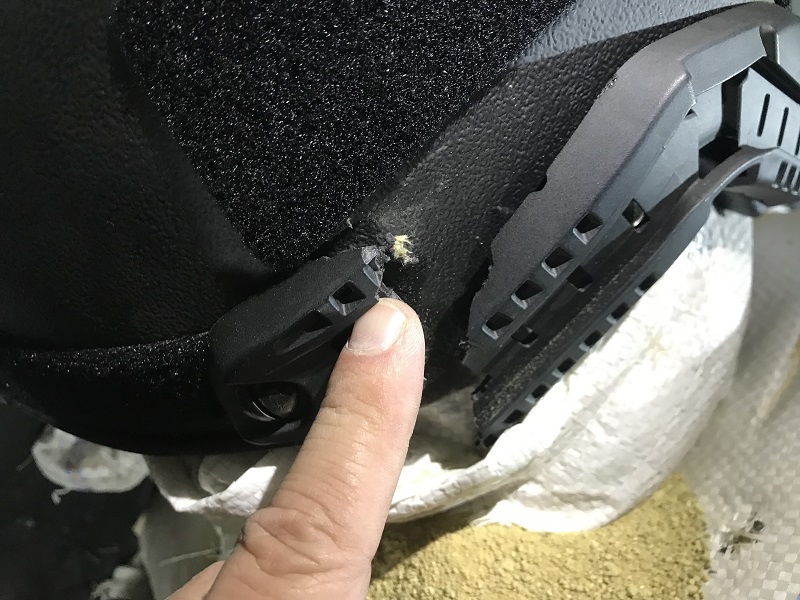 In the image, you see the entry hole in caliber 7.62 x 39 mm. Why, you ask? Because we can and out of pure curiosity.
In the image, you see the entry hole in caliber 7.62 x 39 mm. Why, you ask? Because we can and out of pure curiosity.
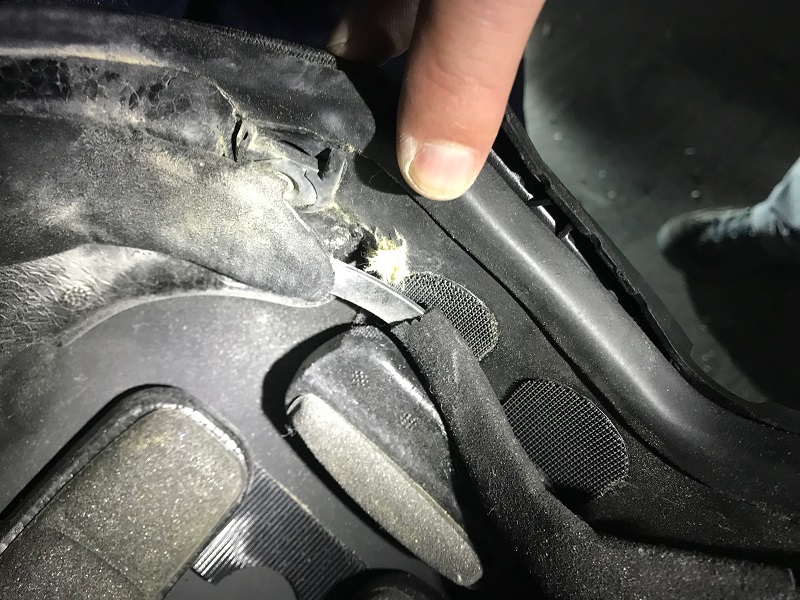 The result was not surprising. The helmet shell was effortlessly penetrated, and the projectile found a new home in the sandbag. Due to the high speed, there was not even a deformation.
The result was not surprising. The helmet shell was effortlessly penetrated, and the projectile found a new home in the sandbag. Due to the high speed, there was not even a deformation.
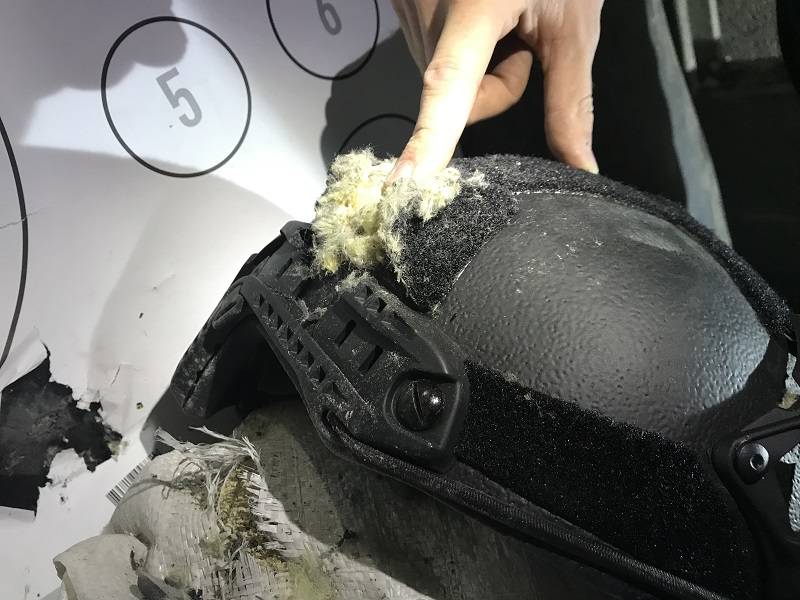 5.56 x 45 mm, as a NATO standard, should never be missing in a test, so here it is. We had no expectations that it would be stopped by the helmet. It wasn't. Here are the exit holes on the opposite side.
5.56 x 45 mm, as a NATO standard, should never be missing in a test, so here it is. We had no expectations that it would be stopped by the helmet. It wasn't. Here are the exit holes on the opposite side.
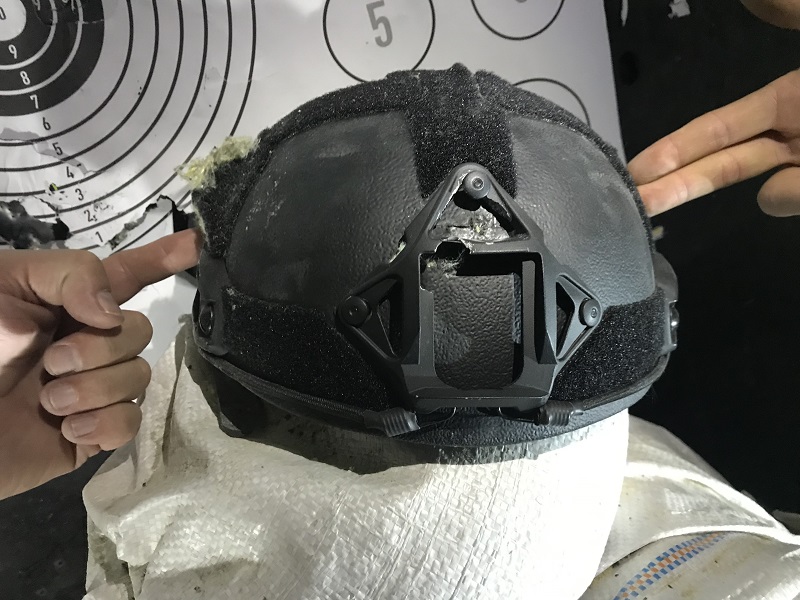 So in it goes on the right, through the cavity or head, and on the other side very effectively out again. This clearly shows how much energy this caliber has.
So in it goes on the right, through the cavity or head, and on the other side very effectively out again. This clearly shows how much energy this caliber has.
SPARTANAT is the online magazine for Military News, Tactical Life, Gear & Reviews.
Send us your news: [email protected]
Ad
similar
Get the weekly SPARTANAT newsletter.
Your bonus: the free E-Book from SPARTANAT.


